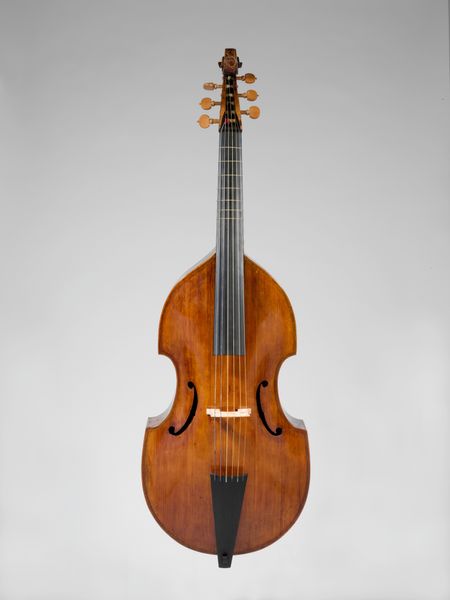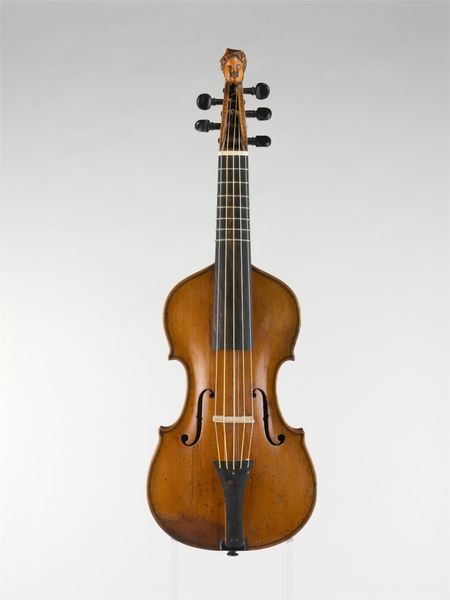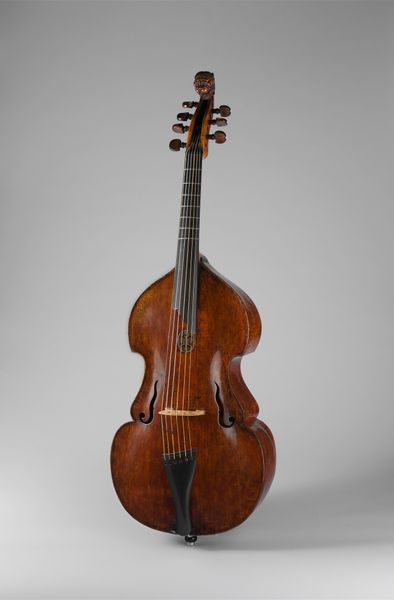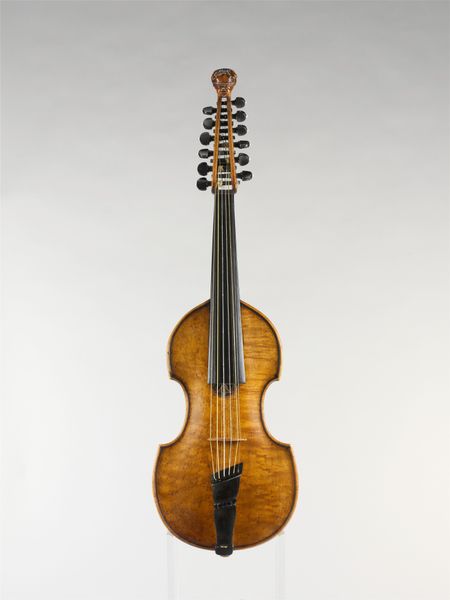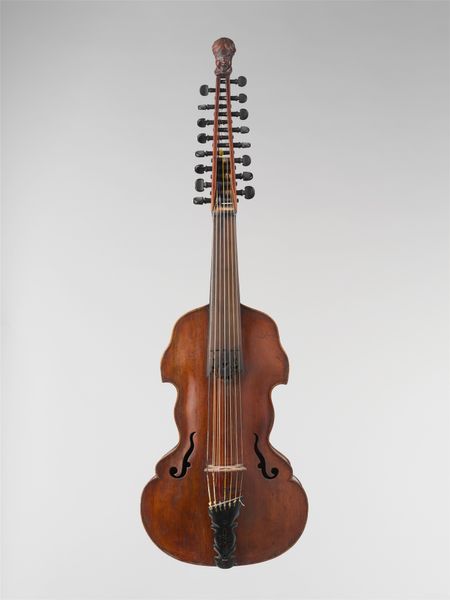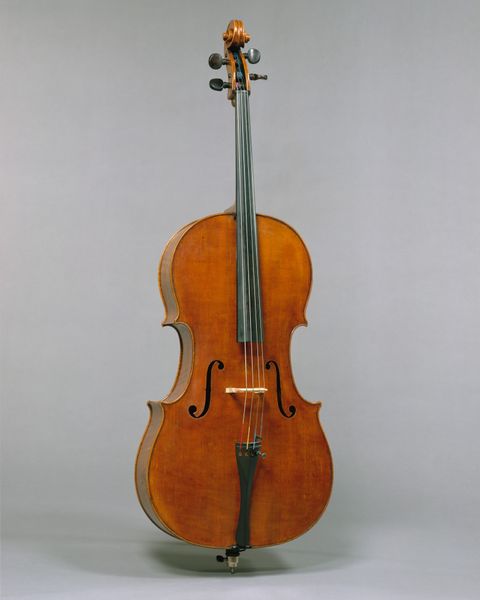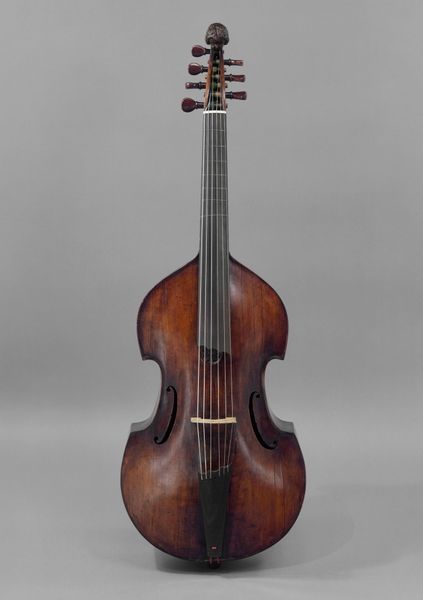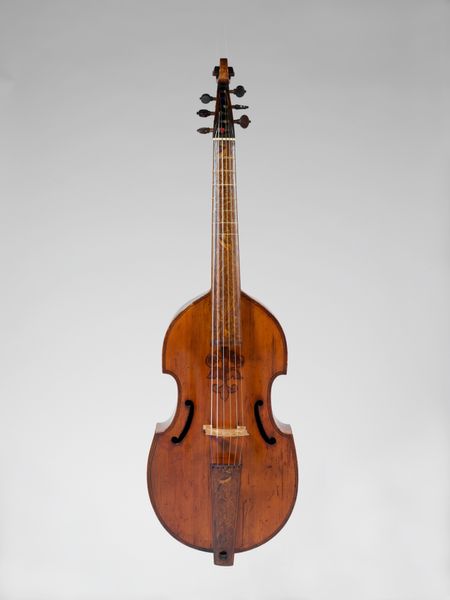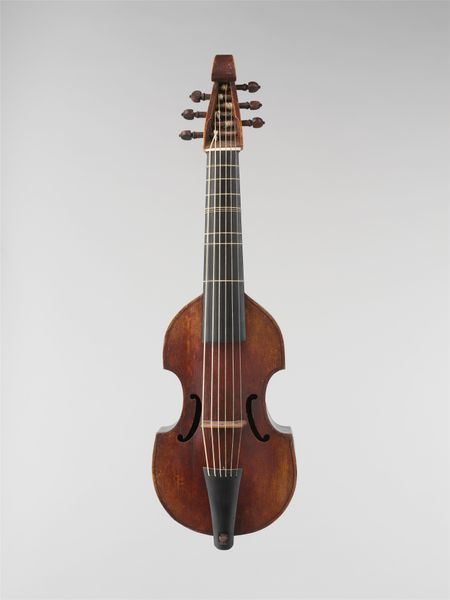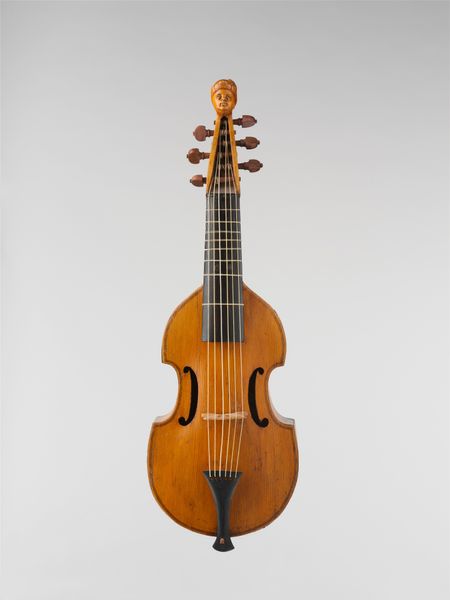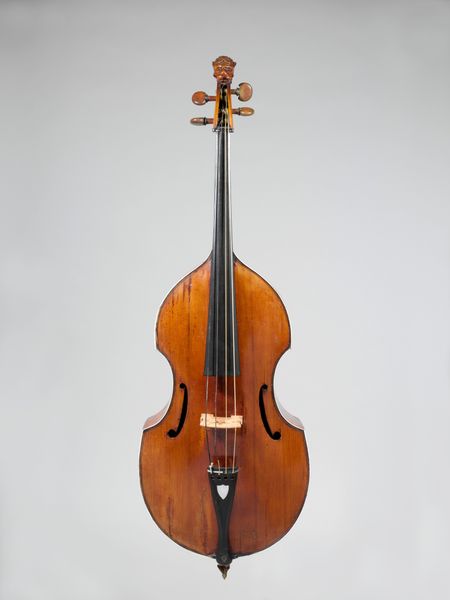
wood
#
baroque
#
sculpture
#
wood
#
musical-instrument
Dimensions: Body L. 35.7 cm (14-1/16 in.); Bowed string L. 48.7 (19-3/16 in.)
Copyright: Public Domain
Editor: This beautiful piece is an 18th-century Viola d'Amore crafted by Joseph Gagliano, residing here at the Met. It’s fascinating to look at a musical instrument displayed like a sculpture. What can you tell me about its social context? Curator: Certainly! The Viola d'Amore emerged in the Baroque era, a period known for its opulent style. We have to consider not only how these instruments sound, but what they represent socially. A piece like this spoke to elevated cultural tastes and, perhaps even more importantly, wealth. Do you notice anything unique about its construction compared to, say, a modern violin? Editor: Yes! The number of strings is really striking, way more than a typical violin or viola. Curator: Exactly. The extra strings are what are called sympathetic strings and vibrate in resonance. This gives the instrument a very distinctive timbre and what must have sounded like almost ethereal effect to listeners of the time. And if we consider where such a piece would be performed – in courtly settings, accompanying theatrical productions – how do you think the image of a musician playing something this ornate contributes to the whole scene? Editor: It suggests a cultivated audience, a society that prized not only music but also the visual spectacle of the performance. It highlights the performer’s status. Curator: Precisely! Gagliano wasn't just making an instrument; he was crafting a symbol. It tells us about the relationship between art, music, and social class. Are musical instruments viewed with that same prestige today? Editor: Probably not to the same degree, which really helps to highlight the difference between then and now. This makes me wonder how modern musical instruments on display in a museum might be received by future generations. Curator: That's an excellent question, one we should be asking ourselves constantly. Today’s musical instrument tells an entirely new story about technological advancement and digital music. The history behind a piece can open new avenues for interpreting musical artistry and our current cultural values.
Comments
No comments
Be the first to comment and join the conversation on the ultimate creative platform.
